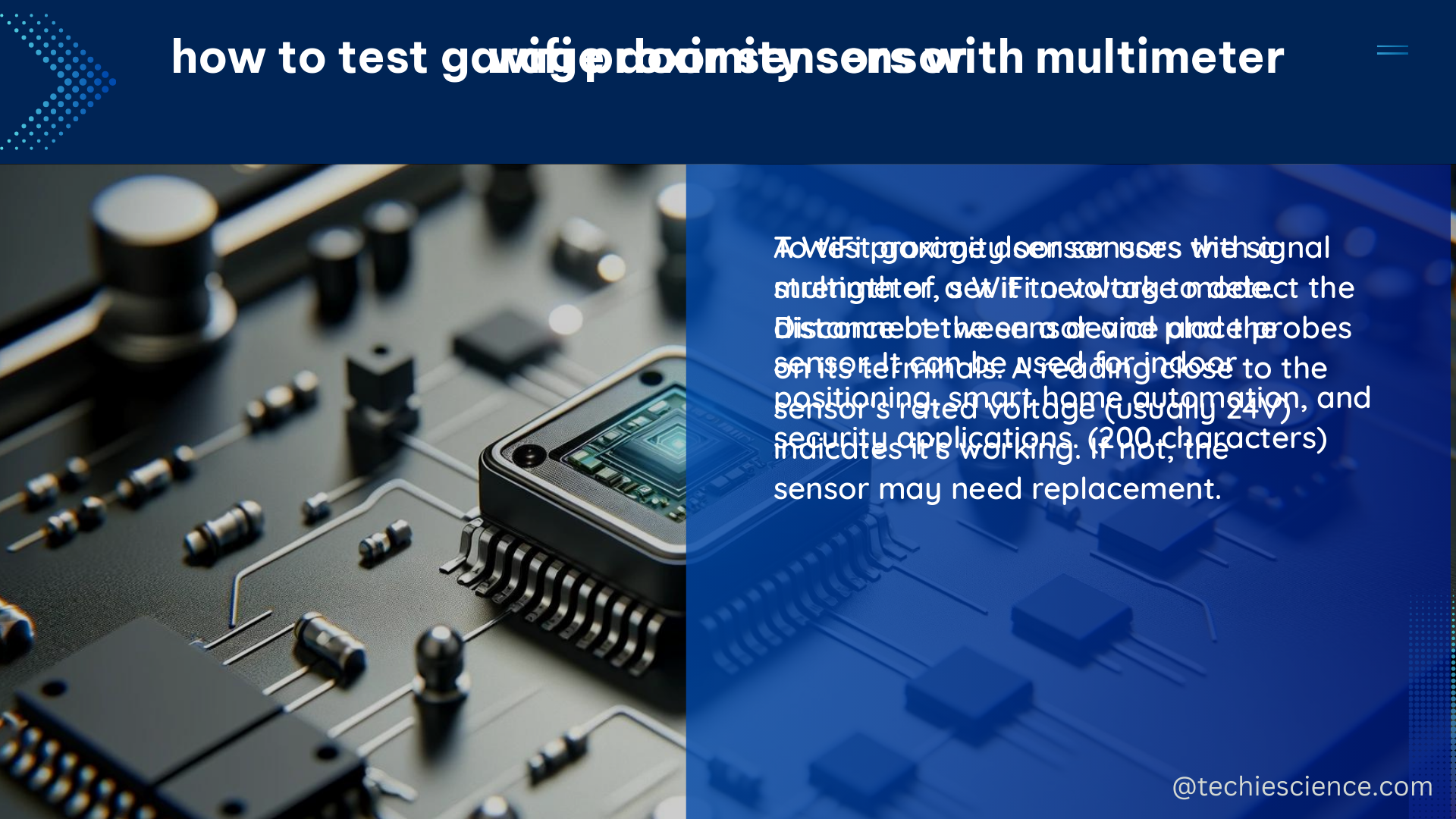Wi-Fi proximity sensing is a powerful technology that leverages the ubiquity of wireless networks to detect the presence and distance of objects or devices within a specific range. This comprehensive guide delves into the intricacies of this technology, providing a deep dive into the underlying principles, practical applications, and cutting-edge advancements.
Understanding the Fundamentals of Wi-Fi Proximity Sensing
At the core of Wi-Fi proximity sensing is the measurement of the Received Signal Strength Indicator (RSSI), which quantifies the strength of the Wi-Fi signal received by a device. By analyzing the RSSI values, the distance between the transmitting device and the receiving device can be estimated. This is based on the principle that the signal strength decreases as the distance between the devices increases, due to factors such as path loss, interference, and environmental conditions.
The accuracy of Wi-Fi proximity sensing is influenced by several key factors:
- Transmission Power: The higher the transmission power of the Wi-Fi device, the stronger the signal and the more accurate the distance estimation.
- Frequency: The frequency of the Wi-Fi signal, typically 2.4 GHz or 5 GHz, can impact the signal propagation and the accuracy of proximity detection.
- Environmental Conditions: Obstacles, walls, and other environmental factors can cause signal reflections, interference, and attenuation, affecting the reliability of proximity measurements.
- Calibration and Algorithms: The use of advanced signal processing algorithms and calibration techniques can significantly improve the accuracy of Wi-Fi proximity sensing.
Practical Applications of Wi-Fi Proximity Sensing

Wi-Fi proximity sensing has a wide range of applications across various industries, including:
-
Indoor Positioning and Tracking: By leveraging the RSSI values from multiple Wi-Fi access points, it is possible to triangulate the position of a device within a building or indoor environment, enabling applications such as asset tracking, personnel monitoring, and location-based services.
-
Smart Home and IoT: Wi-Fi proximity sensing can be used to detect the presence of users in a smart home environment, triggering automated actions such as lighting control, temperature adjustment, and device activation.
-
Retail and Hospitality: Retailers and hospitality businesses can use Wi-Fi proximity sensing to track customer movements, analyze foot traffic patterns, and deliver personalized offers and experiences.
-
Healthcare: In healthcare settings, Wi-Fi proximity sensing can be used to monitor patient movements, track the location of medical equipment, and improve workflow efficiency.
-
Industrial Automation: In manufacturing and industrial environments, Wi-Fi proximity sensing can be employed for asset tracking, worker safety monitoring, and process optimization.
Advancements in Wi-Fi Proximity Sensing
Researchers and engineers are continuously pushing the boundaries of Wi-Fi proximity sensing, exploring new techniques and technologies to enhance its accuracy and reliability. Some of the recent advancements include:
-
Wi-Fi Fingerprinting: By collecting and analyzing the RSSI values from multiple Wi-Fi access points, it is possible to create a unique “fingerprint” for a specific location. This fingerprint can then be used to accurately determine the proximity of a device to that location, even in complex indoor environments.
-
Machine Learning and AI: The integration of machine learning algorithms and artificial intelligence techniques can significantly improve the accuracy of Wi-Fi proximity sensing. These algorithms can learn from historical data, adapt to changing environmental conditions, and provide more robust and reliable proximity estimates.
-
Hybrid Sensing: Combining Wi-Fi proximity sensing with other technologies, such as Bluetooth, ultrasound, or computer vision, can enhance the overall accuracy and reliability of proximity detection, especially in challenging environments.
-
Low-Power Consumption: The development of low-power Wi-Fi modules and energy-efficient proximity sensing algorithms has enabled the deployment of battery-powered Wi-Fi proximity sensors, expanding their applications in IoT and mobile devices.
-
Privacy-Preserving Techniques: Researchers are exploring privacy-preserving approaches to Wi-Fi proximity sensing, such as using anonymized data and secure multi-party computation, to address privacy concerns and enable wider adoption of the technology.
Practical Considerations and Best Practices
When implementing Wi-Fi proximity sensing solutions, there are several practical considerations and best practices to keep in mind:
- Sensor Placement and Calibration: Careful placement of Wi-Fi access points or sensors, as well as proper calibration of the system, is crucial for achieving accurate proximity detection.
- Environmental Factors: Understanding and mitigating the impact of environmental factors, such as obstacles, interference, and temperature changes, can significantly improve the reliability of the proximity sensing system.
- Data Processing and Analytics: Implementing robust data processing algorithms and analytics capabilities can help extract meaningful insights from the proximity data, enabling more informed decision-making.
- Security and Privacy: Ensuring the security of the Wi-Fi proximity sensing system and addressing privacy concerns, such as data anonymization and user consent, are essential for building trust and acceptance.
- Scalability and Integration: Designing the Wi-Fi proximity sensing system with scalability and integration in mind can facilitate seamless deployment and expansion across different applications and environments.
By understanding the fundamentals, practical applications, and advancements in Wi-Fi proximity sensing, you can unlock the full potential of this powerful technology and leverage it to drive innovation, improve efficiency, and enhance user experiences across a wide range of industries.
References:
- Proximity Detection and Distance Measurement of Devices Using Wi-Fi Signals
- Proximity Detection Using Wi-Fi Fingerprints and Smartphones
- Accuracy of Bluetooth Proximity Sensing for Determining Worker Presence in an Office-Based Work Environment
- Wi-Fi Positioning: Principles and Technology Overview
- Enhancing Wi-Fi Proximity Sensing with Machine Learning

The lambdageeks.com Core SME Team is a group of experienced subject matter experts from diverse scientific and technical fields including Physics, Chemistry, Technology,Electronics & Electrical Engineering, Automotive, Mechanical Engineering. Our team collaborates to create high-quality, well-researched articles on a wide range of science and technology topics for the lambdageeks.com website.
All Our Senior SME are having more than 7 Years of experience in the respective fields . They are either Working Industry Professionals or assocaited With different Universities. Refer Our Authors Page to get to know About our Core SMEs.